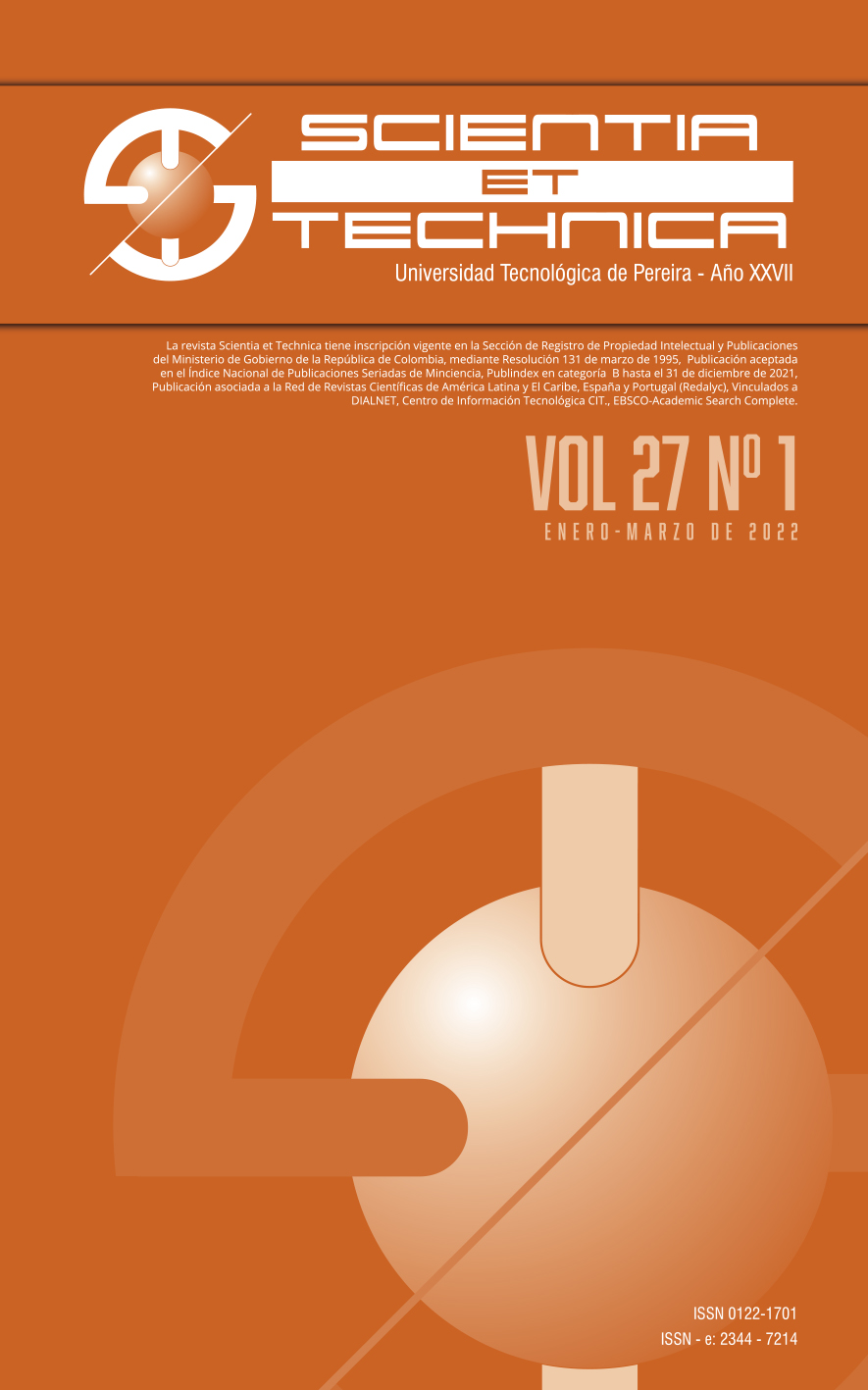Teaching/learning method applied to electrical energy systems
Teaching/learning method applied to electrical energy systems
DOI:
https://doi.org/10.22517/23447214.24546Keywords:
Contemporary didactics, electrical machines, holistic training, knowledge integration, teaching/learningAbstract
Contemporary teaching methods often fail to engage engineering students due to a lack of integration between practical content and interactive techniques. This paper presents the design and implementation of a new teaching-learning method, called "Integration of Knowledge and Resource Articulation," aimed at combining theoretical and practical aspects of electric energy systems. The method is comprised of three sections: pre-laboratory, laboratory, and post-laboratory. Each section features pedagogical moments that use techniques such as active learning, affective teaching, and gamification to create a meaningful and motivating learning experience. This is achieved through the use f videos, educational games, short readings, and activities that encourage students to continue their studies and further research the acquired knowledge. The method aims to emulate real-world situations found in the productive sector.
Downloads
References
[1] A. A. Maciejewski et al., "A Holistic Approach to Transforming Undergraduate Electrical Engineering Education," IEEE Access, vol. 5, no. c, pp. 8148-8161, 2017. DOI: https://doi.org/10.1109/ACCESS.2017.2690221
[2] T. W. Gedra, S. An, Q. H. Arsalan, and S. Ray, "Unified Power Engineering Laboratory for Electromechanical Energy Conversion, Power Electronics, and Power Systems," IEEE Trans. Power Syst., vol. 19, no. 1, pp. 112-119, 2004. DOI: https://doi.org/10.1109/TPWRS.2003.820997
[3] J. M. Maza-Ortega et al., "A Multi-Platform Lab for Teaching and Research in Active Distribution Networks," IEEE Trans. Power Syst., vol. 32, no. 6, pp. 4861-4870, 2017. DOI: https://doi.org/10.1109/TPWRS.2017.2681182
[4] F. Shahnia, M. Moghbel, and H. H. Yengejeh, "Motivating Power System Protection Course Students by Practical and Computer-Based Activities," IEEE Trans. Educ., vol. 59, no. 2, pp. 81-90, 2016. DOI: https://doi.org/10.1109/TE.2015.2448611
[5] E. SERNA and A. SERNA, "Crisis de la Ingeniería en Colombia," Ing. y Compet., vol. 17, no. 1, pp. 63-74, 2015. DOI: https://doi.org/10.25100/iyc.v17i1.2201
[6] T. Chen, A. A. Maciejewski, B. M. Notaros, A. Pezeshki, and M. D. Reese, "Mastering the core competencies of electrical engineering through knowledge integration," ASEE Annu. Conf. Expo. Conf. Proc., vol. 2016-June, 2016.
[7] H. Chowdhury, F. Alam, and I. Mustary, "Development of an innovative technique for teaching and learning of laboratory experiments for engineering courses," Energy Procedia, vol. 160, no. 2018, pp. 806-811, 2019. DOI: https://doi.org/10.1016/j.egypro.2019.02.154
[8] M. R. S. Herrera, J. M. A. Márquez, A. M. Borrero, and M. A. M. Sánchez, "Testing bench for remote practical training in electric machines," in IFAC Proceedings Volumes (IFAC-PapersOnline), 2013. DOI: https://doi.org/10.3182/20130828-3-UK-2039.00076
[9] F. Perez Pinal, S. Nava, J. Nunez Perez, I. Araujo Vargas, E. Vera Cardenas, and A. Barranco Gutierrez, "Experimental B-learning laboratory for an electrical machines undergraduate course," IEEE Lat. Am. Trans., vol. 14, no. 2, pp. 524-529, 2016.DOI: https://doi.org/10.1109/TLA.2016.7437188
[10] S. Nikolic, C. Ritz, P. J. Vial, M. Ros, and D. Stirling, "Decoding Student Satisfaction: How to Manage and Improve the Laboratory Experience," IEEE Trans. Educ., vol. 58, no. 3, pp. 151-158, 2015. DOI: https://doi.org/10.1109/TE.2014.2346474
[11] M. Muñoz-Organero, P. J. Muñoz-Merino, and C. D. Kloos, "Sending learning pills to mobile devices in class to enhance student performance and motivation in network services configuration courses," IEEE Trans. Educ., vol. 55, no. 1, pp. 83-87, 2012. DOI: https://doi.org/10.1109/TE.2011.2131652
[12] A. A. Choudhury and J. Rodriguez, "A New Curriculum in Fluid Mechanics for the Millennial Generation," Rev. Iberoam. Tecnol. del Aprendiz., vol. 12, no. 1, pp. 48-51, 2017.DOI: https://doi.org/10.1109/RITA.2017.2658958
[13] A. Shoufan, "Estimating the cognitive value of YouTube's educational videos: A learning analytics approach," Comput. Human Behav., vol. 92, pp. 450-458, 2019. DOI: https://doi.org/10.1016/j.chb.2018.03.036
[14] L. Lagerstrom, P. Johanes, and U. Ponsukcharoen, "The myth of the six minute rule: Student engagement with online videos," ASEE Annu. Conf. Expo. Conf. Proc., vol. 122nd ASEE, no. 122nd ASEE Annual Conference and Exposition: Making Value for Society, 2015.
[15] F. Llorens-Largo, F. J. Gallego-Duran, C. J. Villagra-Arnedo, P. Compan-Rosique, R. Satorre-Cuerda, and R. Molina-Carmona, "Gamification of the Learning Process: Lessons Learned," Rev. Iberoam. Tecnol. del Aprendiz., vol. 11, no. 4, pp. 227-234, 2016. DOI: https://doi.org/10.1109/RITA.2016.2619138
[16] EDUCACIÓN 3.0, "Aprender Jugando: Las mejores plataformas educativas," 2020. [Online]. Available: Https://www.educaciontrespuntocero.com/recursos/plataformas-para-aprender-jugando/. [Accessed: 14-Jul-2020].
[17] itch.io, "itch.io." [Online]. Available: https://itch.io/. [Accessed: 14-Jul-2020].
Downloads
-
Vistas(Views): 1052
- PDF (Español (España)) Descargas(Downloads): 210
- HTML (Español (España)) Descargas(Downloads): 75
- HTML (Español (España)) Descargas(Downloads): 25
- HTML (Español (España)) Descargas(Downloads): 0
Published
How to Cite
Issue
Section
License
Copyright (c) 2022 Scientia et Technica

This work is licensed under a Creative Commons Attribution-NonCommercial-ShareAlike 4.0 International License.
Copyrights
The journal is free open access. The papers are published under the Creative Commons Attribution / Attribution-NonCommercial-NoDerivatives 4.0 International - CC BY-NC-ND 4.0 license. For this reason, the author or authors of a manuscript accepted for publication will yield all the economic rights to the Universidad Tecnológica of Pereira free of charge, taking into account the following:
In the event that the submitted manuscript is accepted for publication, the authors must grant permission to the journal, in unlimited time, to reproduce, to edit, distribute, exhibit and publish anywhere, either by means printed, electronic, databases, repositories, optical discs, Internet or any other required medium. In all cases, the journal preserves the obligation to respect, the moral rights of the authors, contained in article 30 of Law 23 of 1982 of the Government Colombian.
The transferors using ASSIGNMENT OF PATRIMONIAL RIGHTS letter declare that all the material that is part of the article is entirely free of copyright. Therefore, the authors are responsible for any litigation or related claim to intellectual property rights. They exonerate of all responsibility to the Universidad Tecnológica of Pereira (publishing entity) and the Scientia et Technica journal. Likewise, the authors accept that the work presented will be distributed in free open access, safeguarding copyright under the Creative Commons Attribution / Recognition-NonCommercial-NoDerivatives 4.0 International - https://creativecommons.org/licenses/by-nc-nd/4.0/deed.es license.



